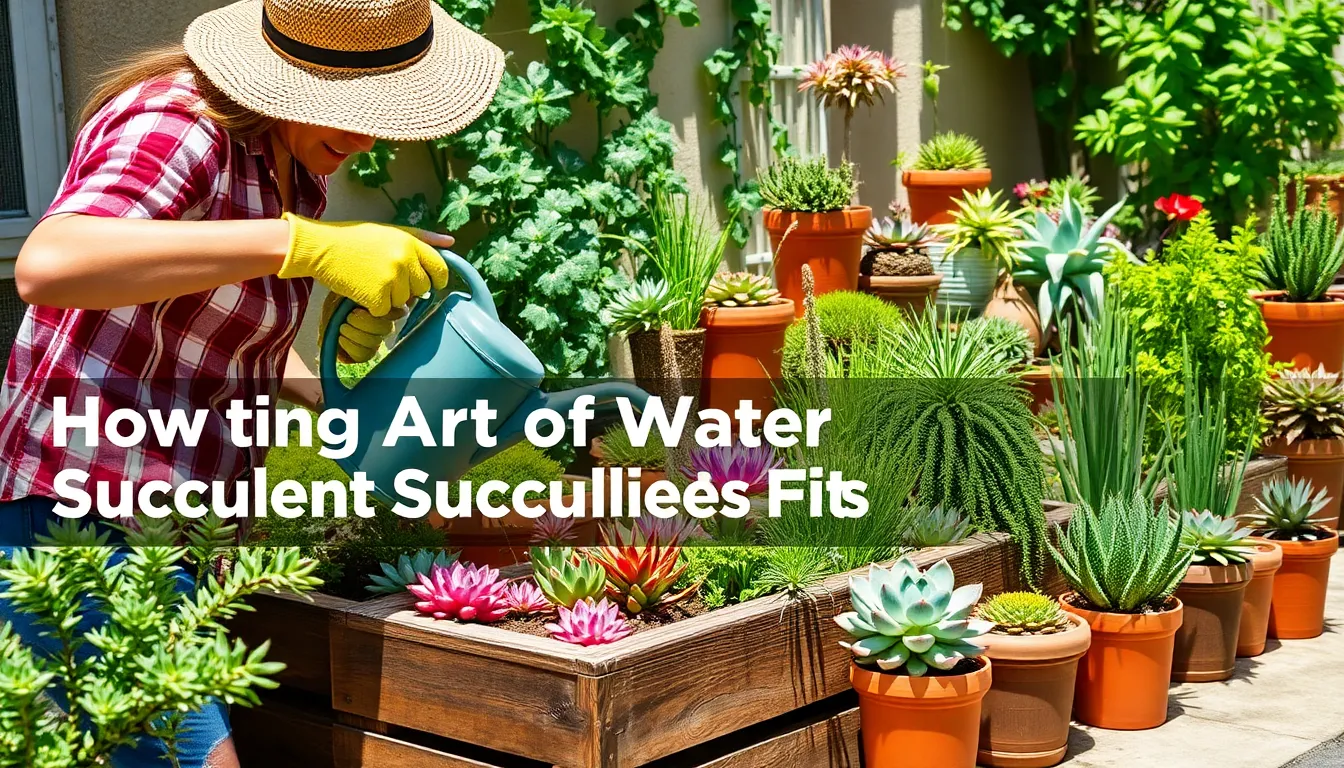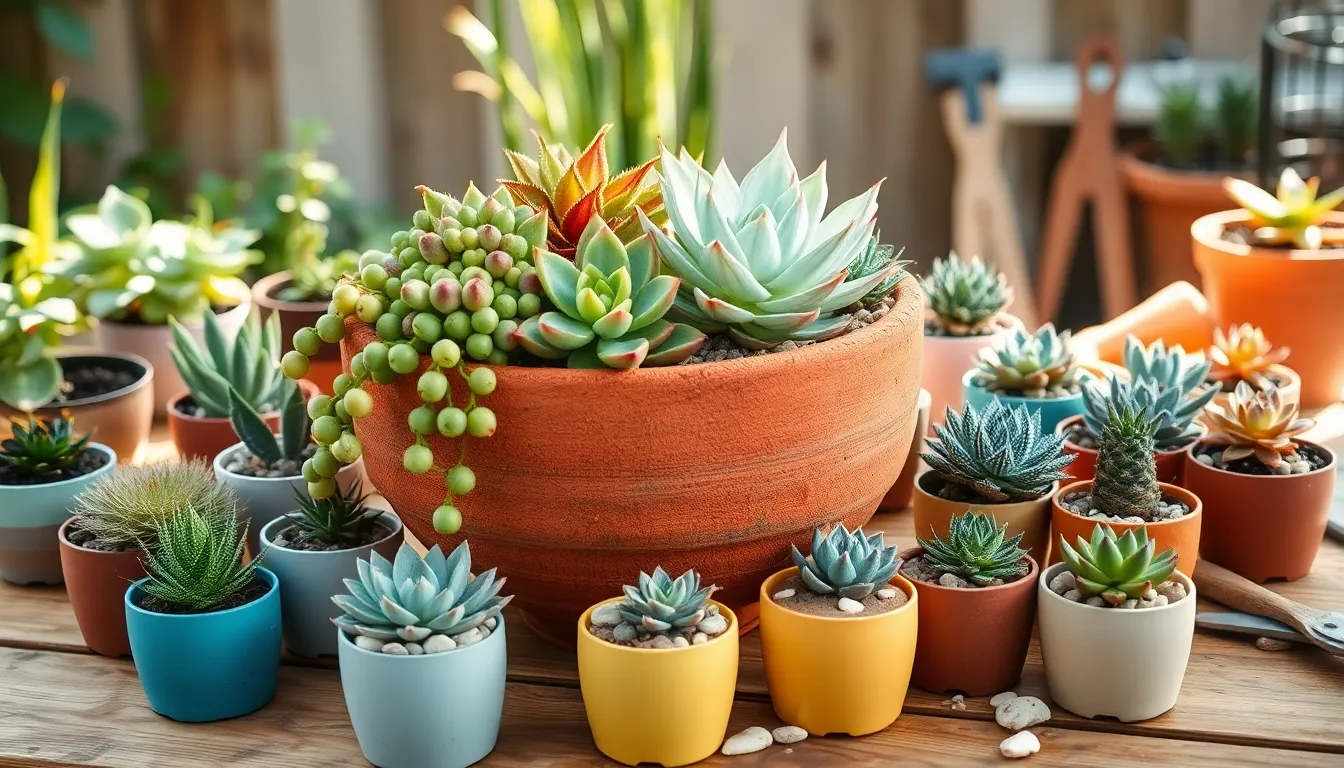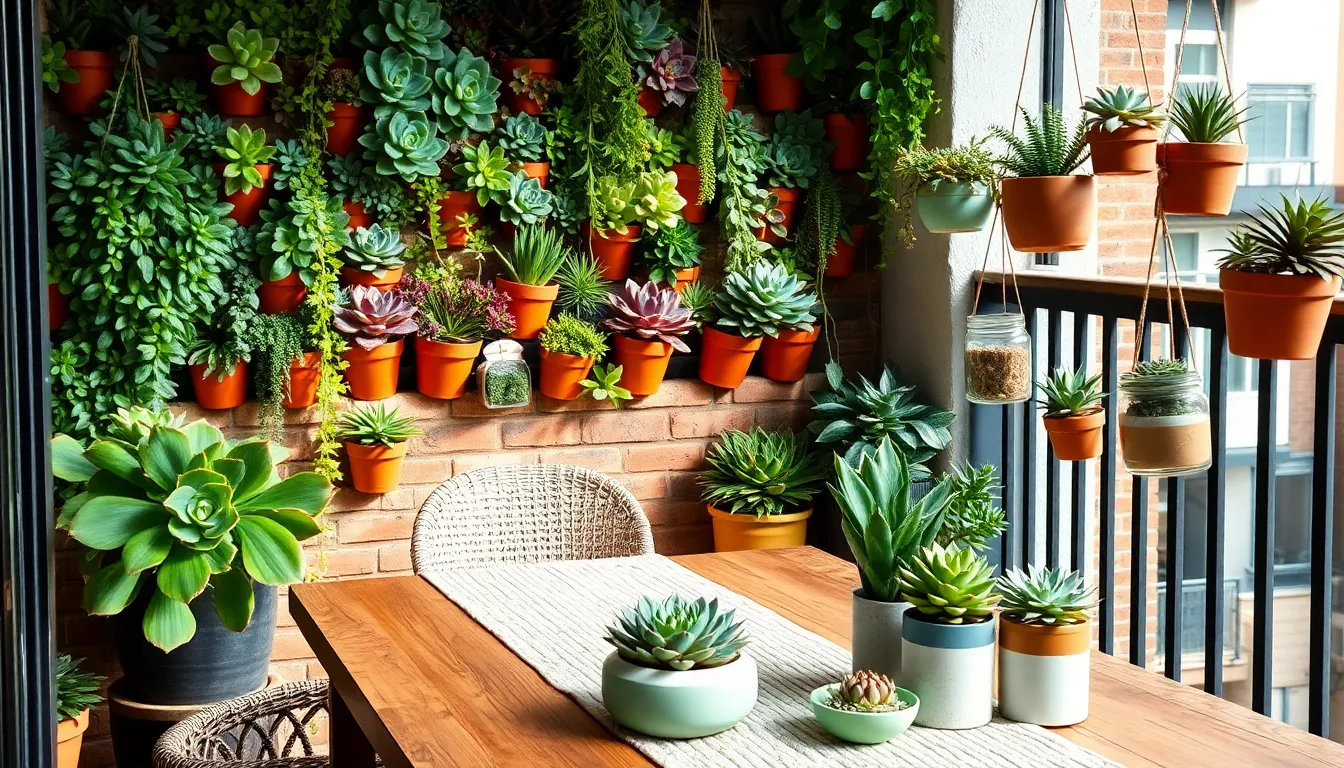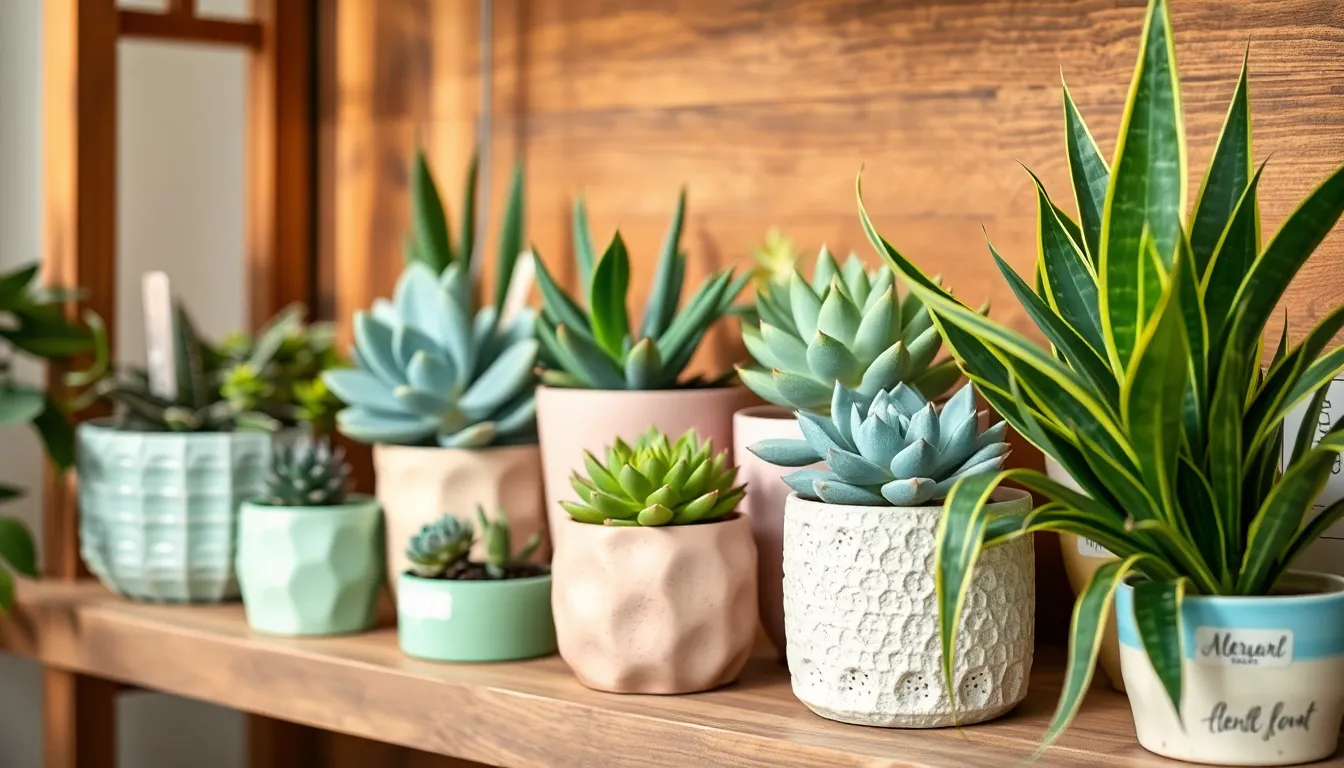Welcoming a succulent into your home or garden is like inviting a little piece of the desert to share in your daily life. These hardy, drought-tolerant plants have captured the hearts of both novice and seasoned gardeners with their striking forms and low-maintenance allure. However, the secret to keeping succulents thriving is understanding the art of watering them just right. It’s not just about pouring water on them; it’s about knowing when, how much, and how often.
For beginners, it might seem counterintuitive that a plant could suffer more from too much love—often in the form of overwatering—than too little. Experienced gardeners know that getting watering just right can make the difference between a succulent that’s vibrant and one that’s withered. In this article, we’ll delve into the science and intuition behind watering succulents, covering everything from soil moisture to environmental factors that affect water needs. You’ll discover practical tips to help your succulents not just survive but truly flourish.
Whether you’re tending to a single pot on a windowsill or an entire succulent garden, understanding proper watering techniques is key to their success. This guide will equip you with actionable insights, helping you avoid common pitfalls while nurturing your green companions with confidence. By the end, you’ll feel empowered to balance water and restraint, ensuring your succulents are healthy and happy for years to come. Let’s embark on this journey to master the delicate dance of watering succulents, unlocking the full potential of these resilient beauties.
Select Suitable Watering Tools
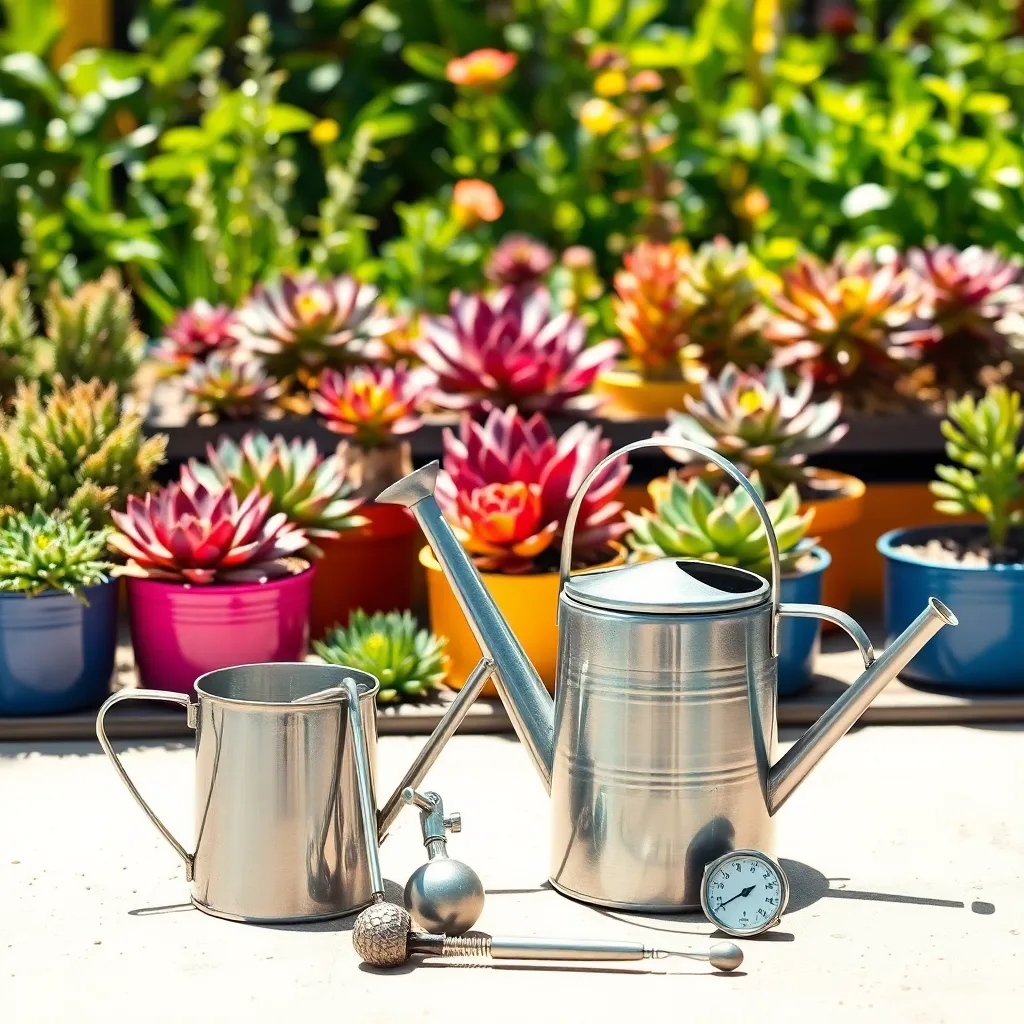
Choosing the right watering tools is essential for maintaining the health of your succulents. Succulents require a precise amount of water, and overwatering is a common mistake that can lead to root rot.
Consider using a watering can with a narrow spout, which allows for targeted watering at the base of the plant. This method ensures that water reaches the roots directly without wetting the foliage, which can help prevent fungal diseases.
For more advanced gardeners, a spray bottle equipped with a mist setting can be used to hydrate succulents gently. Misting can be particularly beneficial during the growing season when plants may require slightly more moisture.
Alternatively, a drip irrigation system can provide a consistent and controlled water supply, ideal for larger succulent collections or outdoor gardens. This system minimizes water wastage and can be set on a timer to ensure regular watering intervals, preventing both under and overwatering.
Assess Soil Moisture Levels
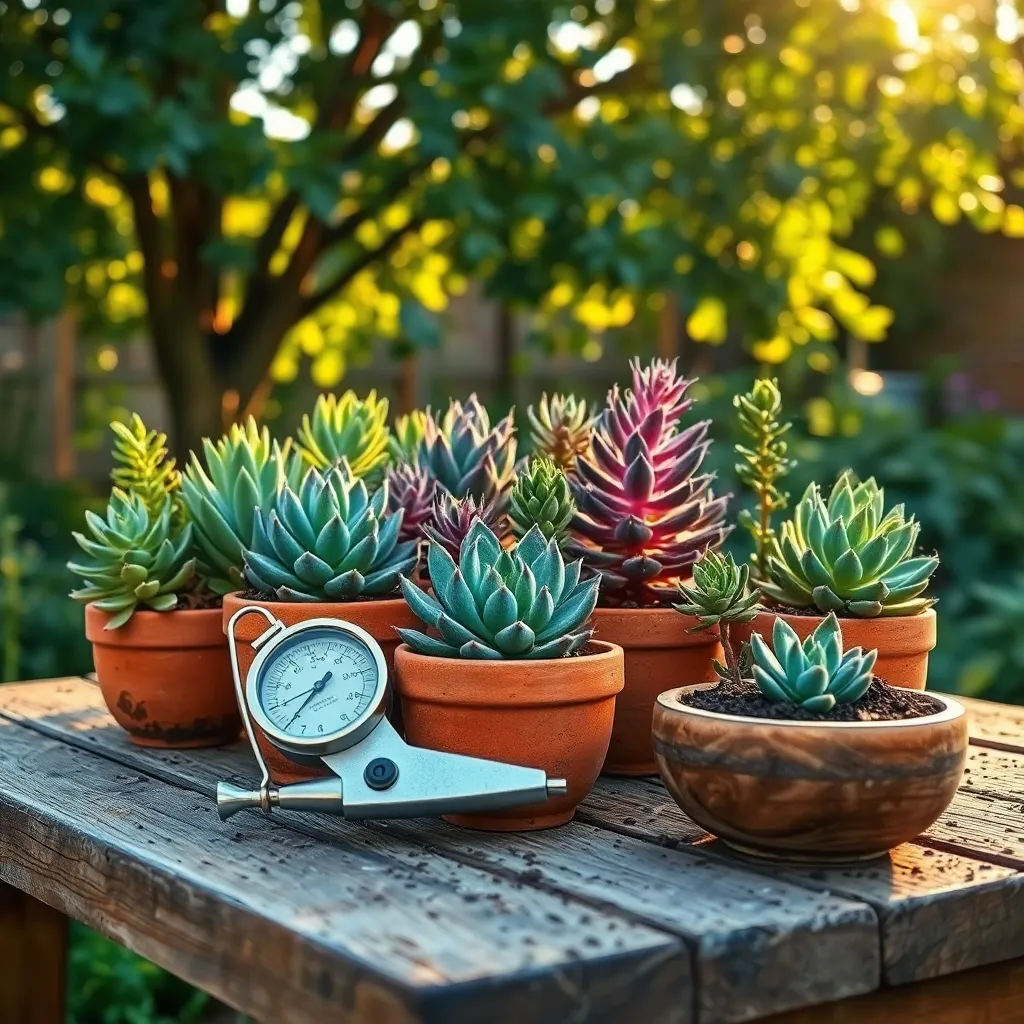
Understanding soil moisture levels is crucial for maintaining healthy succulents. Before watering, insert your finger about an inch into the soil; if it feels dry, it’s time to water.
For more precision, consider using a moisture meter, which provides a clearer idea of the soil’s condition. These devices are especially useful for beginners who are still learning to judge soil dryness by touch.
Consistently checking soil moisture helps prevent overwatering, a common mistake with succulents. Overwatered succulents can develop root rot, which is often fatal to the plant.
In addition to touch, observe the color of the soil, as dry soil often appears lighter. Advanced gardeners might also note changes in succulent leaves; wrinkling can indicate a need for water, while mushy leaves may suggest overwatering.
Water Thoroughly, Not Frequently
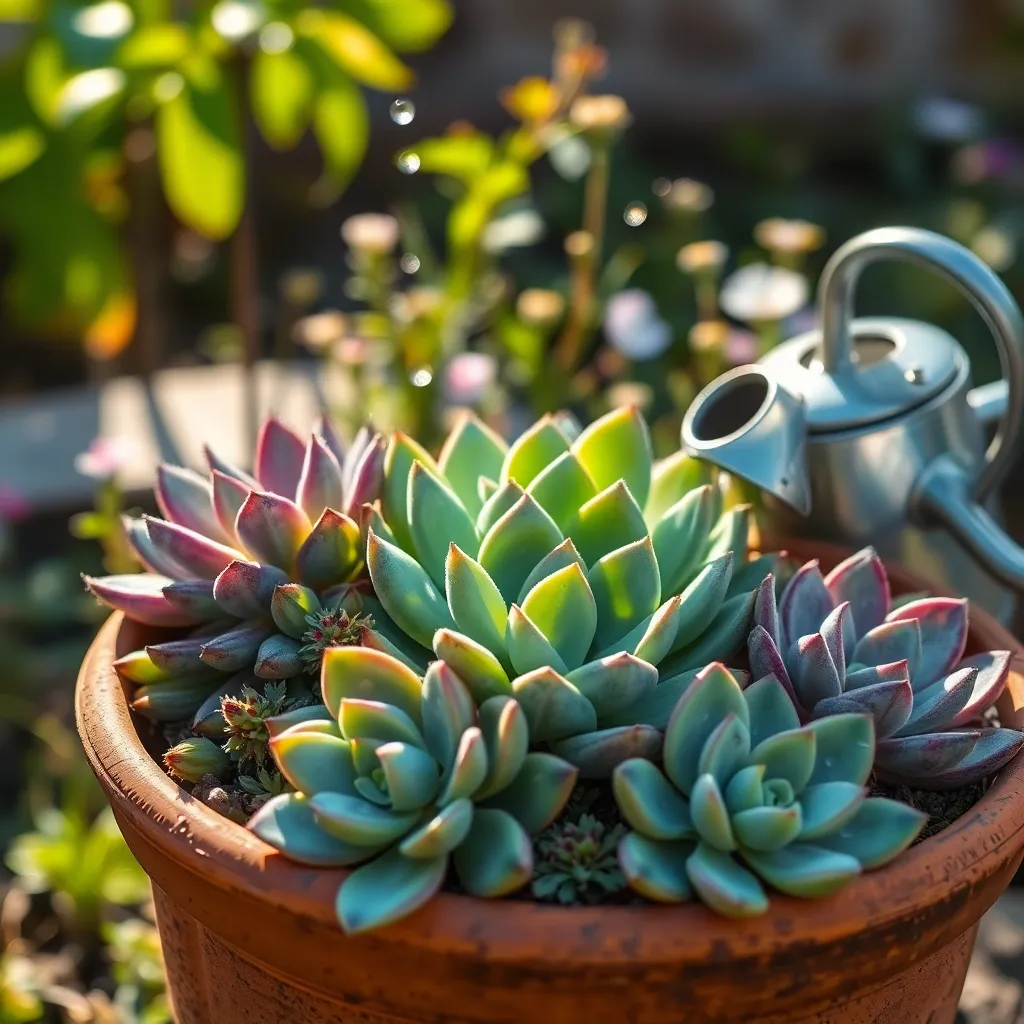
One of the most common mistakes with watering succulents is doing it too frequently rather than thoroughly. Succulents thrive when their roots are allowed to dry out completely between waterings, which mimics the natural dry periods they experience in their native habitats.
To water succulents correctly, always ensure that the soil is completely dry before you water again. This can often mean watering only every two to three weeks, depending on the climate and season.
When you do water, make sure to do so deeply and thoroughly, allowing the water to penetrate the entire root system. Water should pour out from the drainage holes at the bottom of the pot, ensuring that the entire soil mass is saturated.
Using a pot with excellent drainage is crucial to prevent root rot, which succulents are particularly susceptible to. Choose a well-draining soil mix, such as one that includes a combination of coarse sand, perlite, and a small amount of potting soil.
For experienced gardeners looking to optimize, consider using a moisture meter to gauge when your succulents need watering. This tool can provide an accurate reading of the soil’s moisture level, taking the guesswork out of when to water next.
Additionally, if you are growing succulents indoors, be aware that they may require less water than their outdoor counterparts due to lower evaporation rates. Observing the plant’s leaves and overall appearance can also give clues; wrinkled or shriveled leaves can indicate it’s time to water.
Allow Soil to Dry Out
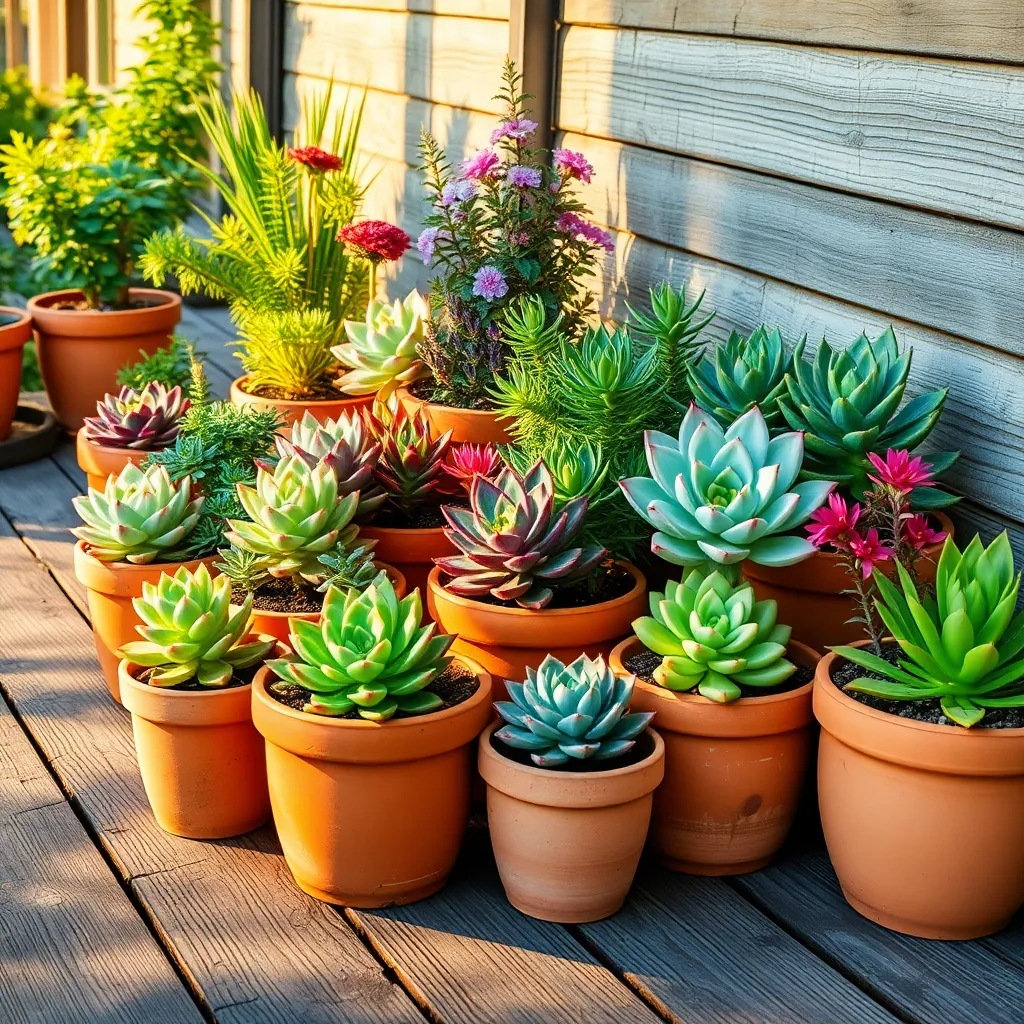
After thoroughly watering your succulents, it is crucial to allow the soil to dry out completely before the next watering. This mimics the natural arid environment that succulents thrive in, preventing root rot and other moisture-related issues.
Succulents store water in their leaves, stems, or roots, enabling them to survive prolonged dry periods. To test if the soil is dry, insert your finger about an inch into the soil; if it feels dry, it’s time to water again.
Choosing the right soil is vital for succulent health. Opt for a well-draining mix, such as a cactus potting mix or a blend of regular potting soil with added sand or perlite.
For beginners, it’s helpful to understand that succulents generally need less water than most houseplants. A good rule of thumb is to water every two to three weeks, though this can vary depending on the climate and time of year.
Experienced gardeners might consider adjusting the watering schedule based on environmental factors like humidity and temperature. In hot, dry conditions, you might need to water more frequently, while in cool, damp climates, less frequent watering is necessary.
Always ensure your pots have drainage holes, as excess water needs an escape route. This prevents water from pooling at the bottom, which can lead to root rot, a common issue with overwatered succulents.
Adjust Watering for Seasons
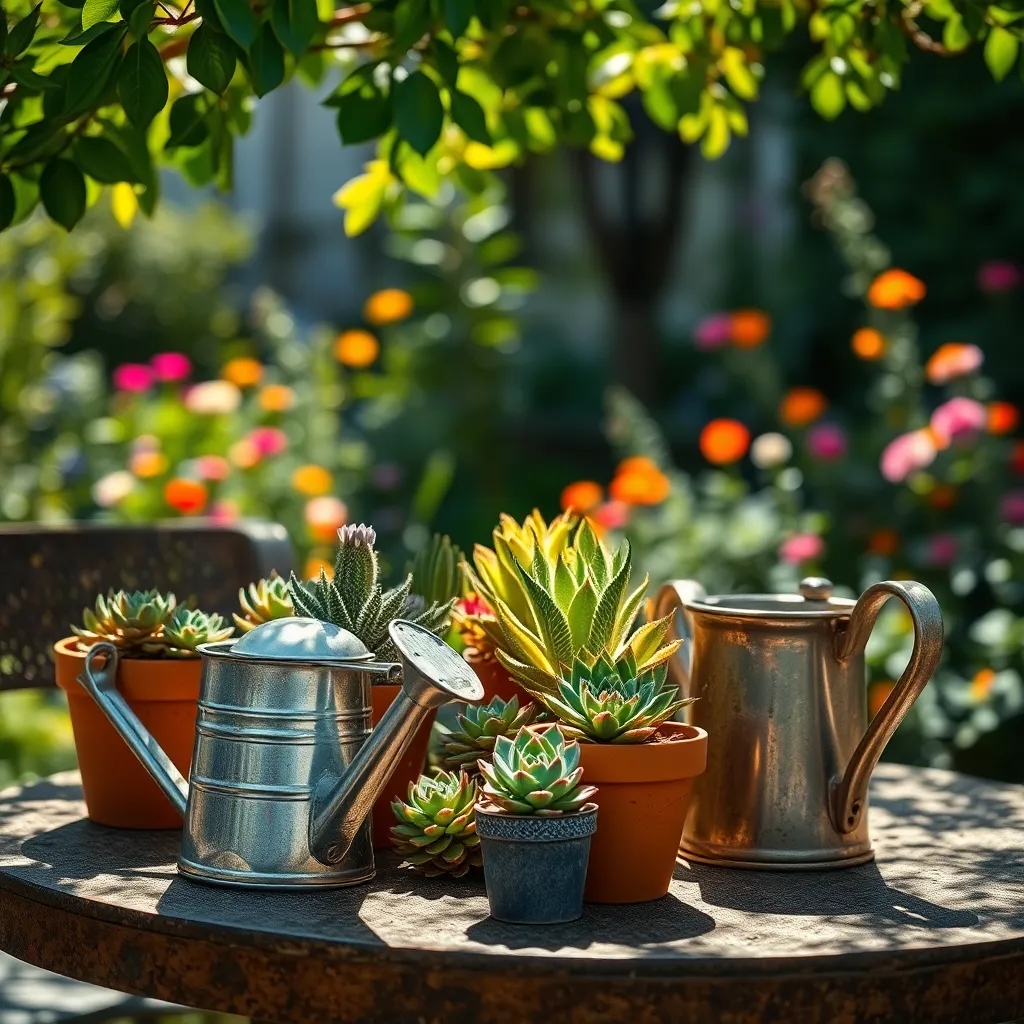
As seasons change, adjusting your watering routine is crucial for keeping succulents healthy. During the warmer months, when succulents are actively growing, you may need to water them more frequently, perhaps once a week, depending on the climate and soil conditions.
In contrast, during the cooler months, succulents enter a dormant phase, and their water requirements decrease significantly. It’s advisable to water them only once every three to four weeks during this period, ensuring the soil is completely dry before watering again.
Pay attention to the signs your succulents give you; if they’re looking shriveled, they might need a bit more water regardless of the season. Use a moisture meter or simply insert your finger into the soil to check for dryness, especially after rainfall or humidity changes.
For a more advanced approach, consider the microclimate around your succulents. Factors like wind, sunlight exposure, and container type can affect how quickly the soil dries out, requiring you to adjust watering frequency accordingly.
If you’re growing succulents indoors, seasonal adjustments are still necessary, but less pronounced due to stable indoor temperatures. Always ensure that your indoor succulents are in well-draining soil and in pots with drainage holes to prevent overwatering.
Conclusion: Growing Success with These Plants
As we wrap up our exploration of nurturing succulents, let’s draw parallels to nurturing relationships. First, understanding the unique needs of your partner, much like knowing what type of succulent you have, is vital. Second, timing is everything—just as succulents need watering at the right intervals, relationships thrive on timely attention and care. Third, balance is key; overwatering can harm succulents, just as excessive control can strain relationships. Fourth, observe and adjust—being attentive to changes in your partner, similar to watching for signs in your plants, ensures you meet their evolving needs. Lastly, patience and consistency are your allies; growth happens over time, both in flourishing succulents and enduring relationships.
As an actionable next step, take a moment today to assess the “watering schedule” of attention and love you give to your partner. Are there adjustments you can make for a healthier, more vibrant relationship?
Bookmark this article as your go-to guide for nurturing both your plant and human connections. By doing so, you’ll be ready to cultivate deeper, more fulfilling relationships. Remember, just as succulents grow with proper care, so too will your relationships flourish with understanding and patience. Here’s to a future of thriving connections!

